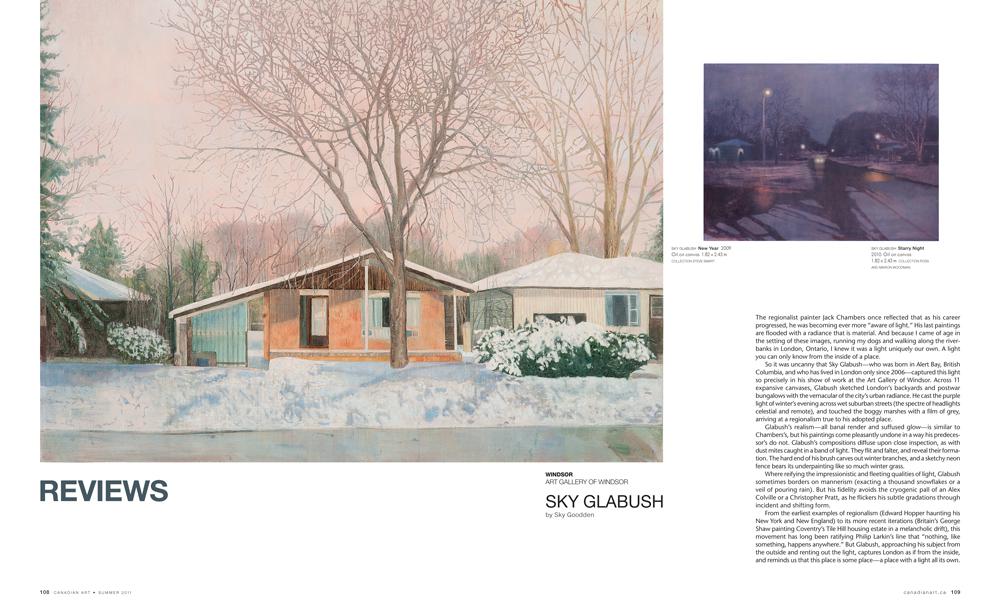The regionalist painter Jack Chambers once reflected that as his career progressed, he was becoming ever more “aware of light.” His last paintings are flooded with a radiance that is material. And because I came of age in the setting of these images, running my dogs and walking along the riverbanks in London, Ontario, I knew it was a light uniquely our own. A light you can only know from the inside of a place.
So it was uncanny that Sky Glabush—who was born in Alert Bay, British Columbia, and who has lived in London only since 2006—captured this light so precisely in his show of work at the Art Gallery of Windsor. Across 11 expansive canvases, Glabush sketched London’s backyards and postwar bungalows with the vernacular of the city’s urban radiance. He cast the purple light of winter’s evening across wet suburban streets (the spectre of headlights celestial and remote), and touched the boggy marshes with a film of grey, arriving at a regionalism true to his adopted place.
Glabush’s realism—all banal render and suffused glow—is similar to Chambers’s, but his paintings come pleasantly undone in a way his predecessor’s do not. Glabush’s compositions diffuse upon close inspection, as with dust mites caught in a band of light. They flit and falter, and reveal their formation. The hard end of his brush carves out winter branches, and a sketchy neon fence bears its underpainting like so much winter grass.
Where reifying the impressionistic and fleeting qualities of light, Glabush sometimes borders on mannerism (exacting a thousand snowflakes or a veil of pouring rain). But his fidelity avoids the cryogenic pall of an Alex Colville or a Christopher Pratt, as he flickers his subtle gradations through incident and shifting form.
From the earliest examples of regionalism (Edward Hopper haunting his New York and New England) to its more recent iterations (Britain’s George Shaw painting Coventry’s Tile Hill housing estate in a melancholic drift), this movement has long been ratifying Philip Larkin’s line that “nothing, like something, happens anywhere.” But Glabush, approaching his subject from the outside and renting out the light, captures London as if from the inside, and reminds us that this place is some place—a place with a light all its own.
This is an article from the Summer 2011 issue of Canadian Art. To read more from this issue, please visit its table of contents.









